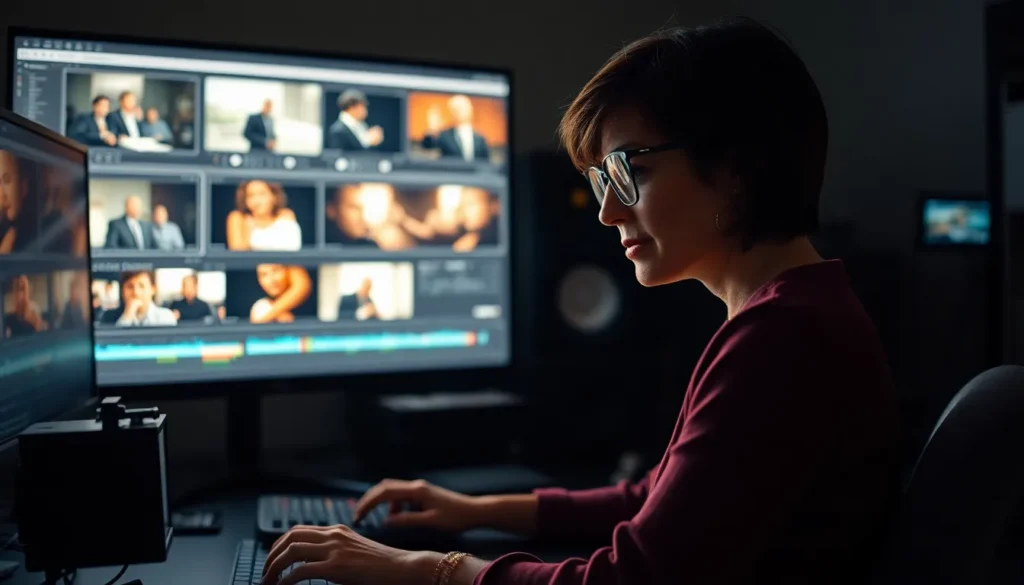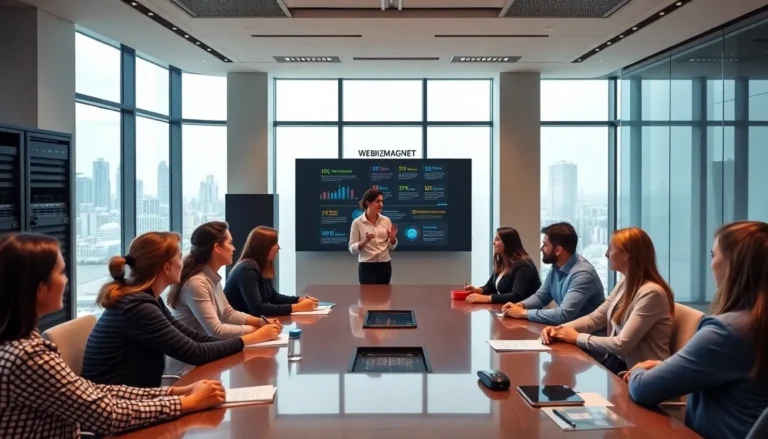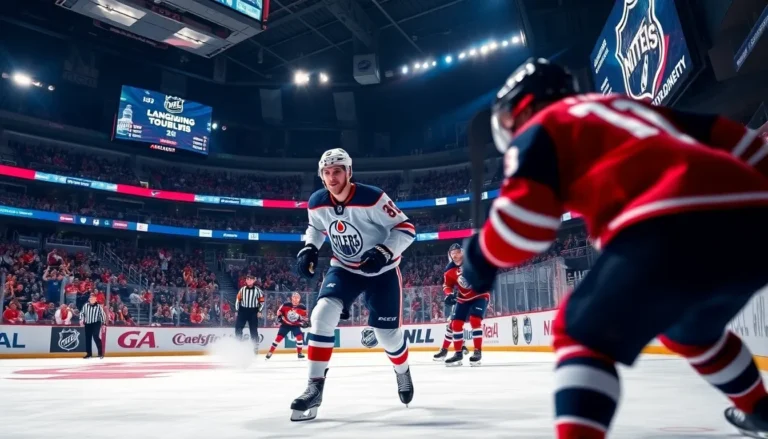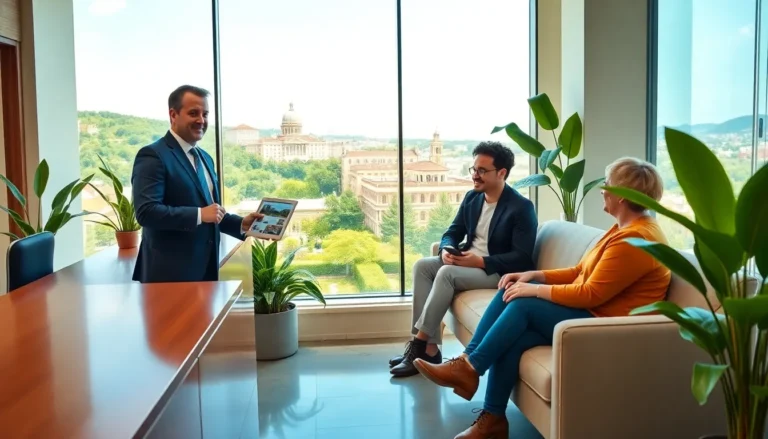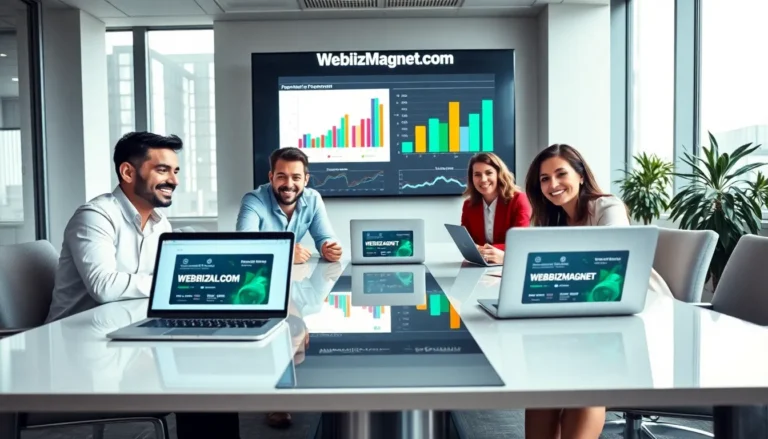Table of Contents
ToggleFilm editing is like the secret sauce of cinema—it’s what turns a collection of clips into a captivating story. Without it, movies would be a jumbled mess of scenes that leave audiences scratching their heads. Ever wondered how those heart-pounding montages or gut-wrenching emotional moments come to life? That’s the magic of film editing at work.
Overview of Film Editing Analysis
Film editing analysis examines how editors assemble footage to shape a story. It explores the techniques and choices that create visual narratives. Different methods, such as cutting, pacing, and transitions, contribute to the overall impact of a film. For instance, a cross-cutting technique allows simultaneous actions in separate locations to unfold cohesively, enhancing tension.
Analyzing a film’s editing involves studying various elements. Editors ensure that timing aligns with audience expectations. Slow-paced sequences foster contemplation, while fast cuts can escalate excitement. Therefore, each choice influences viewer emotions and perceptions.
Specific examples of editing techniques showcase their significance. Jump cuts disrupt continuity to convey urgency or confusion. Montage sequences condense time, presenting information rapidly. A rhythmic edit synchronizes action with music, heightening engagement.
Studying films like “Whiplash” reveals how editing shapes narrative intensity. The aggressive cuts during drumming scenes amplify the character’s struggle, while softer transitions during moments of reflection encourage empathy. Each cut serves as a storytelling device, impacting the viewer’s experience.
Film editors often collaborate closely with directors to realize artistic vision. Feedback loops exist between them, ensuring a shared understanding of the desired tone. Analyzing these dynamics provides insight into the collaborative nature of film production.
Ultimately, film editing analysis highlights its pivotal role in storytelling. The methodical organization of clips doesn’t just arrange scenes; it crafts immersive experiences that resonate with audiences. Effective editing breathes life into raw footage, transforming it into compelling cinema.
Key Concepts in Film Editing

Film editing encompasses essential techniques that shape cinematic storytelling. Understanding these concepts enhances the appreciation of how films engage viewers.
Continuity Editing
Continuity editing maintains a seamless flow in narratives. This technique ensures that time and space remain consistent, allowing viewers to follow the story effortlessly. Match on action, eye-line match, and shot/reverse shot are key strategies within this method. By utilizing these strategies, filmmakers create a sense of realism, guiding the audience through the narrative without confusion. Effective continuity editing fosters immersion, allowing emotional connections to develop naturally. It enables audiences to focus on the story without being distracted by jarring transitions or mismatched visuals.
Montage
Montage serves as a powerful tool for storytelling. Editors use this technique to compress time and condense information, delivering essential narrative elements quickly. Different types of montages, such as thematic montages and rhythmic montages, contribute to emotional resonance. Various clips can be paired together to establish a mood or highlight contrasting ideas. Famous examples, like the training montages in “Rocky,” illustrate how music and visuals work in harmony to evoke feelings. Montage not only accelerates storytelling but also emphasizes character development, reinforcing key themes in a compelling manner.
Techniques Used in Film Editing
Film editing encompasses various techniques that shape narratives and enhance storytelling. Understanding these methods clarifies how editors breathe life into raw footage.
Cutting on Action
Cutting on action involves transitioning between shots during a movement. This technique maintains visual continuity, ensuring smooth flow between scenes. For instance, when a character throws a punch, the edit occurs at the moment of impact. The result creates a dynamic viewing experience that keeps audiences engaged. Editors often use this method to maintain energy and momentum, making scenes feel more cohesive. The technique minimizes the jarring effect of abrupt cuts, fostering a sense of realism in storytelling.
Jump Cuts
Jump cuts create a sense of urgency by compressing time within a single scene. This technique often removes unnecessary pauses, resulting in rapid narrative progression. For example, when a character prepares for a date, several moments might be skipped to maintain pacing. Viewers feel the rush of time and can experience heightened emotions. Jump cuts also reveal character development or actions in a humorous or dramatic light. By highlighting significant changes without lengthy exposition, editors keep audiences focused on essential narrative elements. This technique has become a hallmark of modern filmmaking, utilized extensively in contemporary cinema.
The Role of Film Editors
Film editors serve a pivotal function in the filmmaking process, transforming raw footage into cohesive stories that resonate with audiences. By meticulously assembling clips, they provide structure and clarity to the narrative. Editors apply various techniques to enhance storytelling, from pacing to transitions, ensuring that the film communicates its intended message effectively.
Cutting on action creates a seamless flow between shots, maintaining energy and immersion. This technique allows viewers to stay engaged while also supporting the narrative’s rhythm. Jump cuts, conversely, condense time and emphasize urgency, pushing the story forward without unnecessary exposition.
Collaboration with directors is crucial for editors. They work closely to align their artistic visions, reinforcing the film’s tone and emotional impact. Editors evaluate footage critically, determining which shots best serve the narrative arc while also considering audience engagement.
Montages stand out as powerful editing tools. They condense time and showcase character development, such as the training sequences seen in classics like “Rocky.” By synchronizing visuals with music, editors evoke emotions that deepen audience connections to the characters.
Continuity editing ensures narrative flow. Techniques like match on action and shot/reverse shot promote consistency in both space and time, allowing viewers to remain immersed in the film’s world. Editors must balance aesthetic choices with the need for coherence, creating a final product that speaks to viewers on multiple levels.
Ultimately, film editors shape the audience’s experience, crafting compelling narratives that bring stories to life. Through their artistry, they elevate raw footage into engaging cinema, making them indispensable in the film production landscape.
Case Studies in Film Editing Analysis
Film editing analysis provides insights into how specific films employ various techniques to enhance storytelling. Examining both classic and contemporary films reveals distinct approaches that have shaped cinematic experiences over time.
Classic Films
Classic films like “Psycho” showcase groundbreaking editing techniques that revolutionized the industry. The shower scene exemplifies dynamic cutting and suspenseful pacing, heightening tension and shock. Alfred Hitchcock utilized montage effectively, blending sound and visuals to evoke visceral reactions. Additionally, films such as “Citizen Kane” emphasized deep focus and innovative transitions, impacting the overall narrative flow. Editors crafted emotional depth by manipulating time and space, seamlessly connecting scenes to maintain viewer engagement.
Contemporary Films
Contemporary films continue to push boundaries in film editing. “Mad Max: Fury Road” represents high-octane editing with relentless energy. Editors employed rapid cuts and dynamic transitions to create an immersive experience, compelling viewers to feel the adrenaline of the chase. The use of jump cuts in “Birdman” blurred the lines between scenes, enhancing the sense of immediacy. Additionally, “La La Land” utilized musical montages to convey character growth effectively, intertwining visuals and music for emotional resonance. These examples highlight how modern editors enhance narratives through innovative techniques.
Film editing serves as the backbone of storytelling in cinema. Its techniques shape narratives and evoke emotions that resonate with audiences. By mastering pacing transitions and various cutting methods editors create a rhythm that enhances the viewing experience.
The collaborative effort between editors and directors is vital in realizing a film’s artistic vision. Each choice made during the editing process can transform raw footage into a powerful narrative. As seen in both classic and contemporary films editing continues to evolve pushing the boundaries of creativity and engagement.
Ultimately the art of film editing is about more than just piecing together clips. It’s about crafting a journey that captivates viewers and leaves a lasting impact.

